How To Find Your Sourdough Rhythm [for better sourdough]
This post may contain affiliate links.
One of the best things you can do when learning to make sourdough bread is to find your sourdough rhythm. But what does finding your sourdough rhythm actually mean?
Finding your sourdough baking rhythm involves discovering a routine that works best for you and your schedule while ensuring consistent and successful results. It means learning the way your starter works, how long it takes to rise in various conditions and how it behaves at different times of the year. It's utilising this information to create a rhythm that allows you to easily bake sourdough bread with great ease and minimal fuss.
When you find your sourdough starter rhythm, it's so much easier to bake with purpose. Sourdough bread baking will be a joy, rather than a chore! Imagine baking delicious sourdough bread with minimal effort, less mess and most importantly, a sense of joy!
Often you'll find your sourdough rhythm over time, but if you're struggling to become one with your SCOBY, then I've put together some tips and tricks to help you.
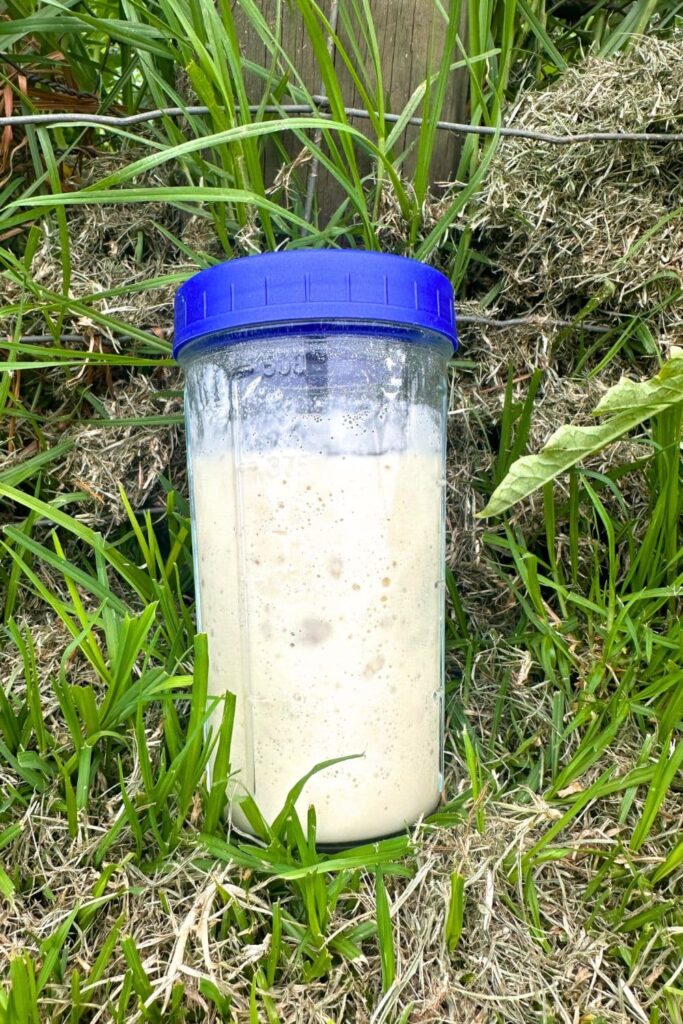
Let's Find Your Sourdough Rhythm (so you can bake better sourdough bread)
Here are 6 easy steps you can follow to find your sourdough rhythm in order to bake better sourdough bread!
- Create a schedule for feeding your sourdough starter & baking bread.
- Experiment and use the findings to adapt and flex.
- Work with the seasons and adapt to weather conditions.
- Practice, practice, practice.
- Find the baking method that best suits you and your kitchen.
- Find joy in the process and stop focusing on perfection.
Start with a Schedule
Determine a regular schedule for feeding your sourdough starter and baking bread. Consider factors such as when you have the most time and energy for baking, as well as any other commitments or activities that may influence your schedule.
If you're a parent, looking at when your children have naps or downtime and factoring in the craziness of dinner time is always good too! As a busy mom, I've put together all my sourdough mom secrets here.
What you're looking for here is what time you have available for "hands on dough" time and when you'd need to be hands off. This information is really valuable in creating a sourdough baking timeline.
While it might seem silly to write these times down, it really will help you to eventually develop a natural sourdough rhythm. Everything takes practice! Creating some structure now will help everything fall into place later!
You might also find this ebook written on the topic of scheduling sourdough helpful.
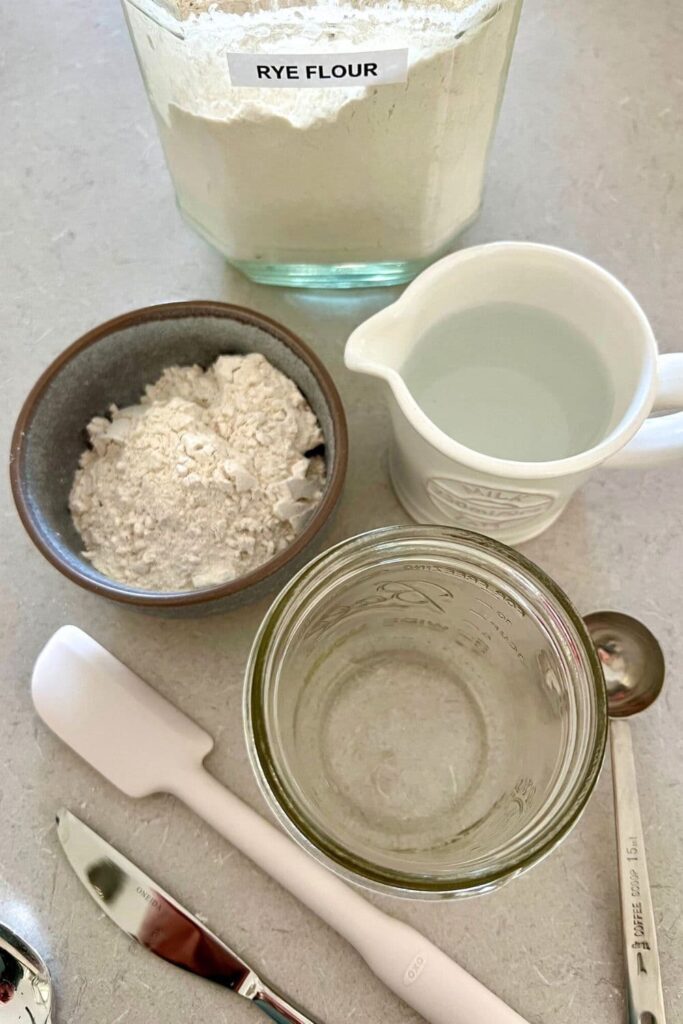

Experiment and Adapt
Begin by experimenting with different feeding and baking schedules to see what works best for you. This may involve adjusting the timing of feedings and baking sessions to fit your lifestyle and preferences. Be open to adapting your routine as needed to optimize your results.
For example, try feeding your sourdough starter at night. Use a ratio of 1:3:3 so that it takes longer to peak and is ready for you to bake in the morning. That way you can get up and mix some dough while you're breakfast is toasting.
Alternatively, if mornings aren't your thing, then try feeding your sourdough starter when you get up so that it's ready in the evening. Then you can mix your dough while you prepare dinner (you're in the kitchen anyway) and allow your dough to bulk ferment overnight.
You can read more about experimenting with your sourdough starter here.
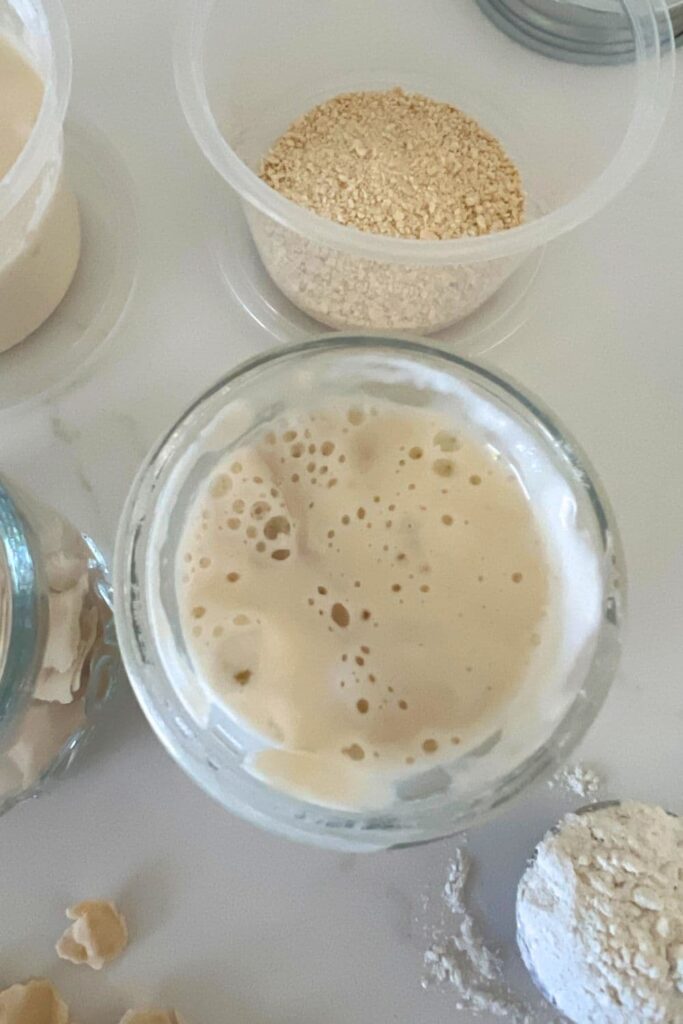
Work With The Seasons
When working with the wild yeast in your sourdough starter, its essential to take note of the seasons and the temperature around you. Working with dough in the cooler temperatures of winter is totally different to working with dough in the heat of summer. You can read my best tips about baking sourdough in warmer or cooler temperatures here.
In the cooler winter temperatures, you'll be able to leave your sourdough overnight to ferment on the counter. This gives you more hands off dough time to work with and can be really handy to make the dough work while you sleep!
Of course, if you have the air conditioning on year round, then the seasons might not means so much, but it's still good to take note of moisture in the air from rain or humidity and the effects it can have on your dough.
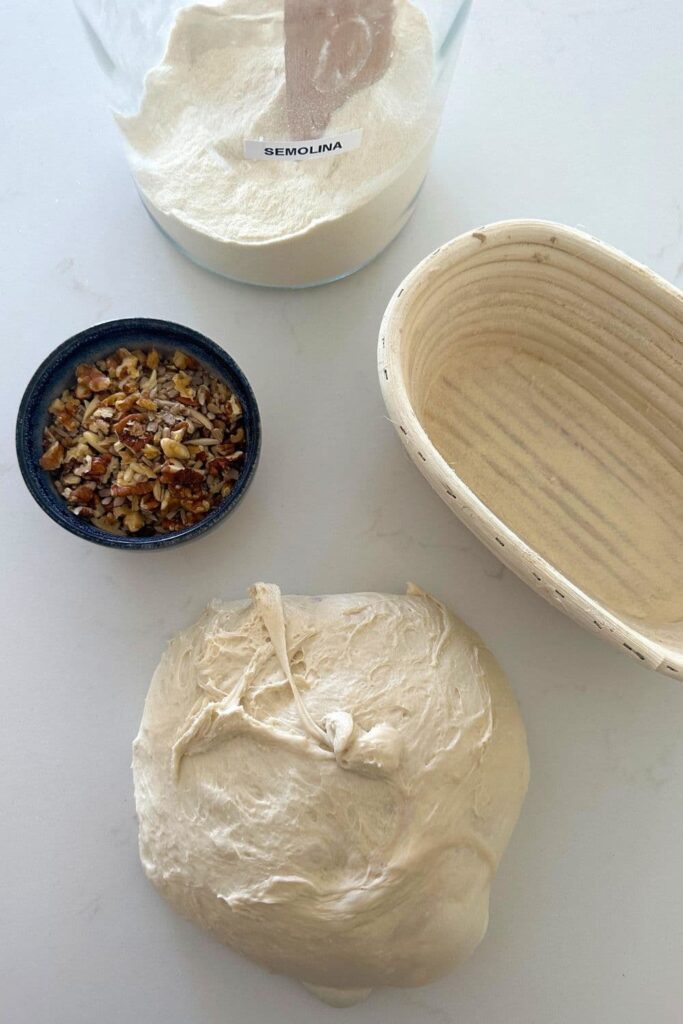
Practice Patience
Building a sourdough baking rhythm takes time and practice, so be patient with yourself as you experiment and learn. Just like any skill, baking sourdough bread requires practice - and lots of it!
Embrace the process of trial and error, and don't be discouraged by setbacks or imperfect loaves. With each bake, you'll gain valuable experience and confidence in your abilities.
As we say, there's a lesson in every loaf! So don't be deterred by a "failed" loaf - you can always turn it into sourdough croutons or a delicious sourdough bread pudding.
So get your hands in the dough and practice, practice, practice. Take notes (this sourdough journal is great for this purpose) and really immerse yourself in the joy of sourdough!
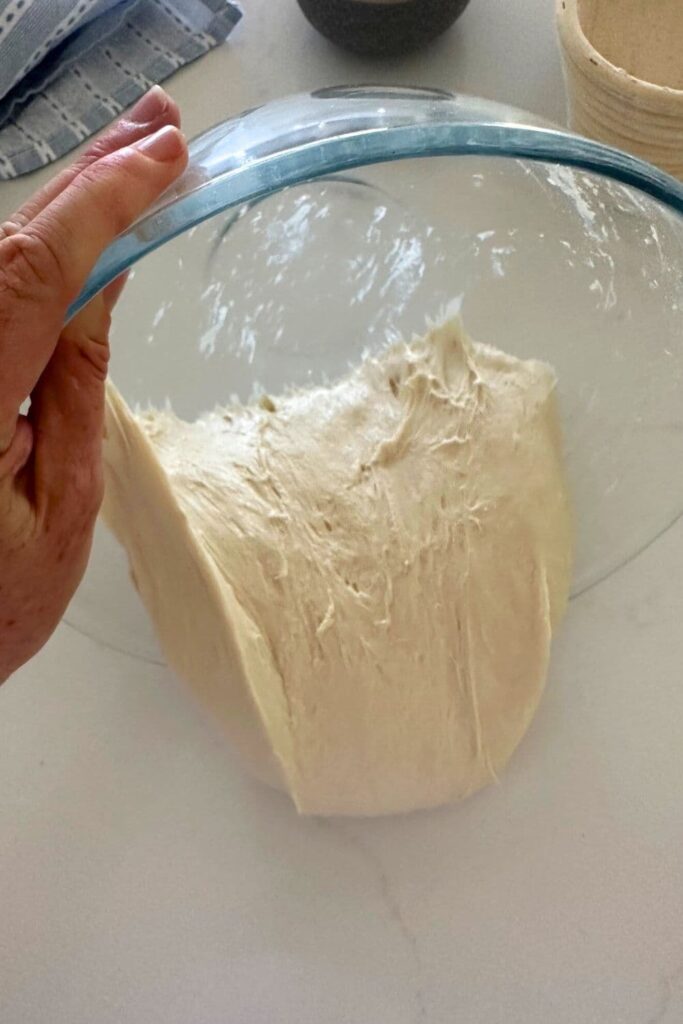
Find A Baking Method That Suits You & Your Kitchen
While I'll always advocate that baking sourdough in a Dutch Oven will give you the best results, sometimes, you need to adapt the process to suit your kitchen and lifestyle better.
Luckily, there are lots of other ways to bake sourdough that don't require a heavy Dutch Oven (this is particularly good if you have a smaller oven or can't physically lift a Dutch Oven in and out of the oven).
The other thing that you need to consider is how you're going to use the bread. If your family love eating sandwiches, baking crusty boules might not be the best thing and you might need to consider baking sourdough in a loaf pan instead.
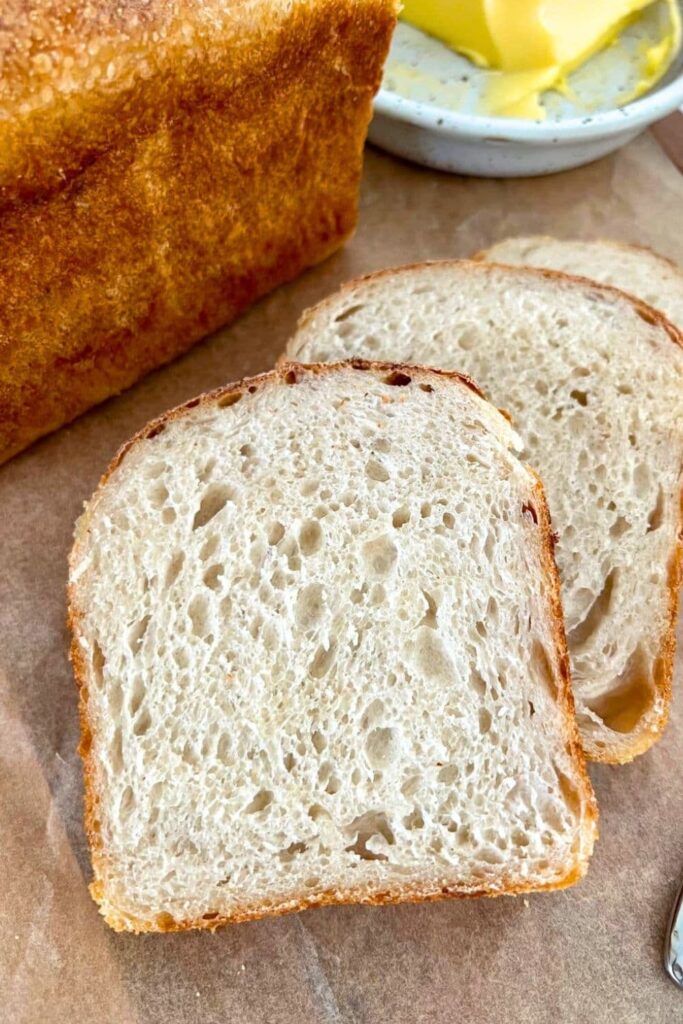
Find Joy in the Process
Ultimately, finding your sourdough baking rhythm is about finding joy and fulfilment in the process of baking bread. Embrace the meditative and rewarding aspects of sourdough baking, and celebrate the small victories along the way.
Whether you're kneading dough, shaping loaves, or savoring the aroma of freshly baked bread, let the experience nourish your soul and inspire your creativity. Who knows, you might even end up selling your sourdough bread!
And remember that you don't need to bake perfect sourdough bread! It's always the flavor that's important!
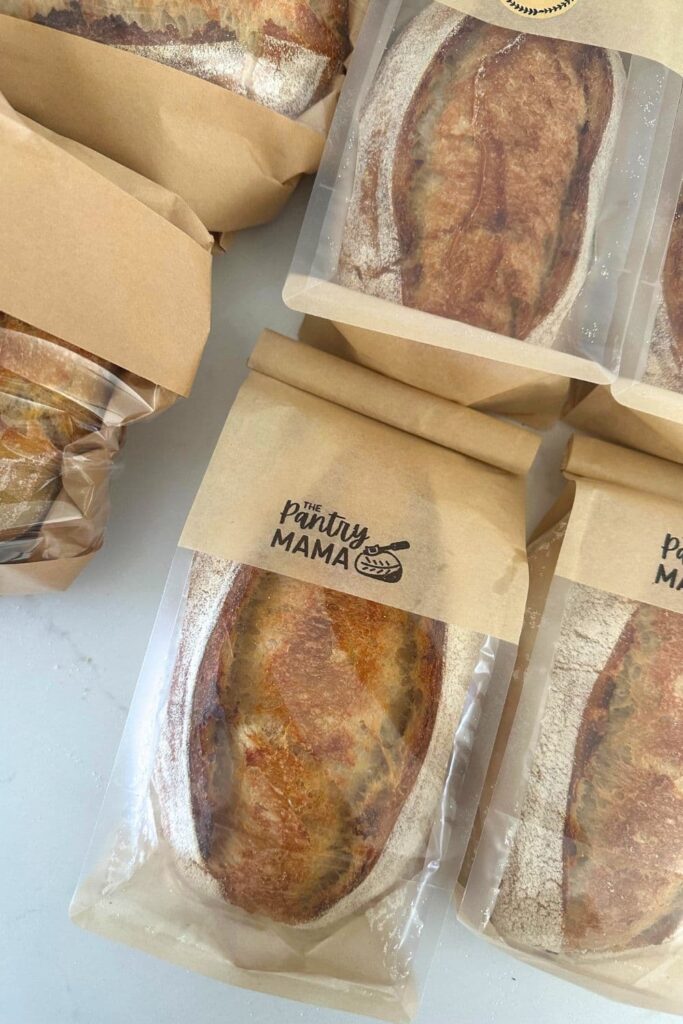
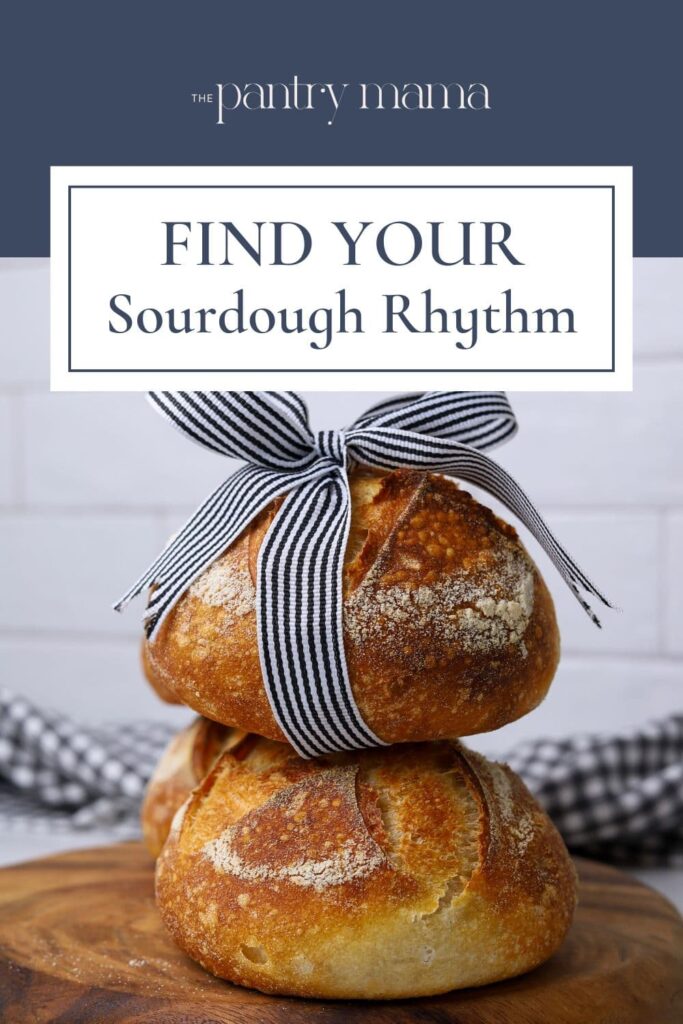


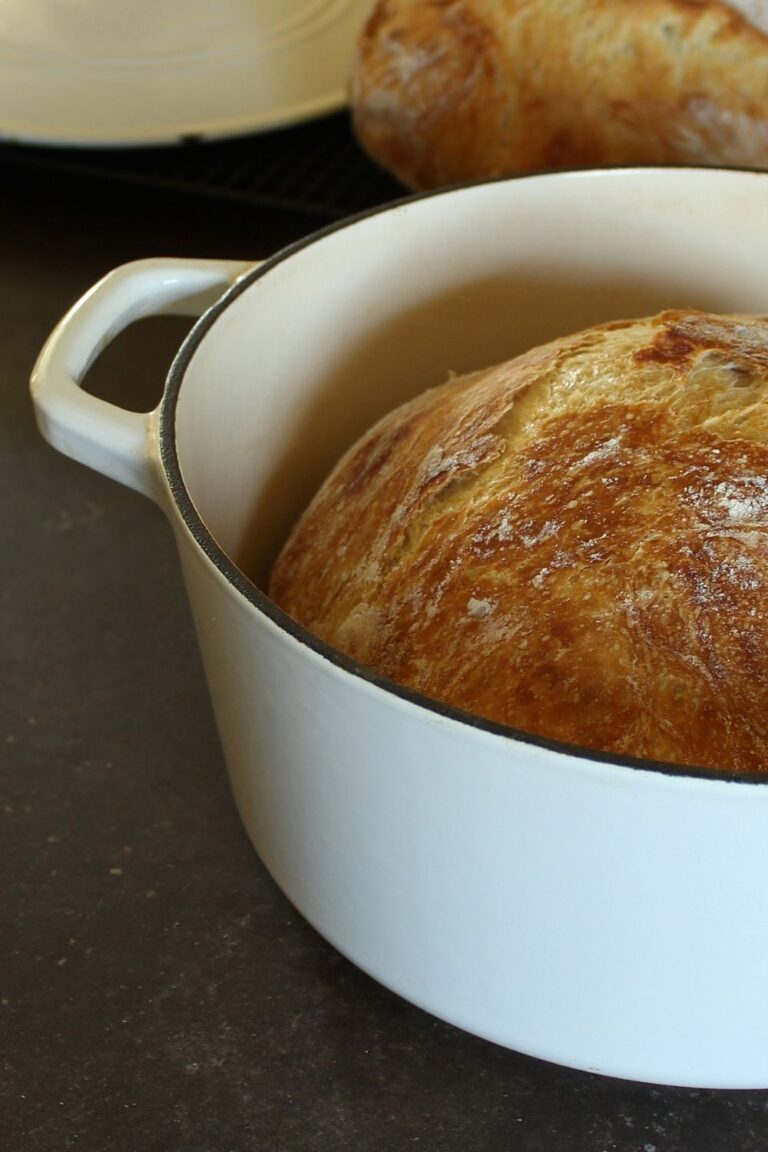
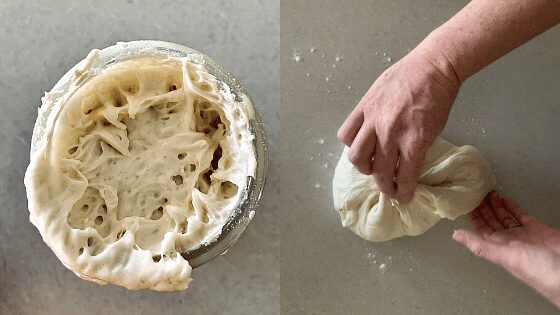
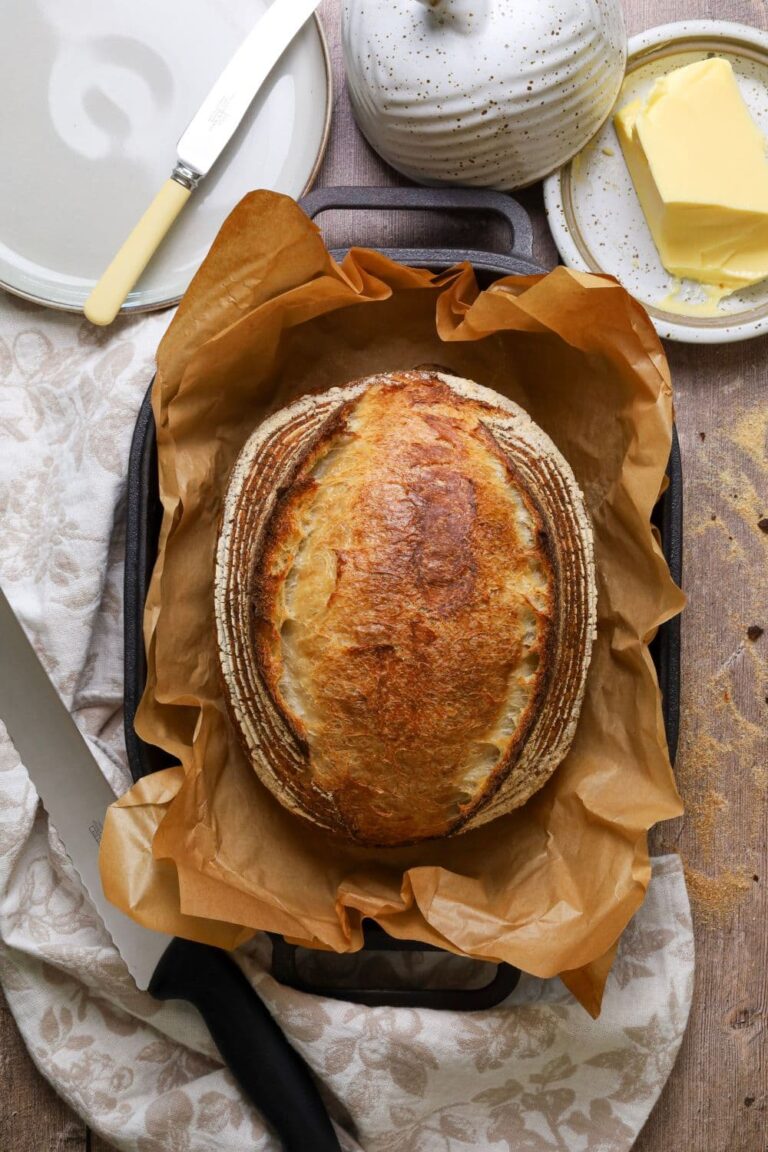
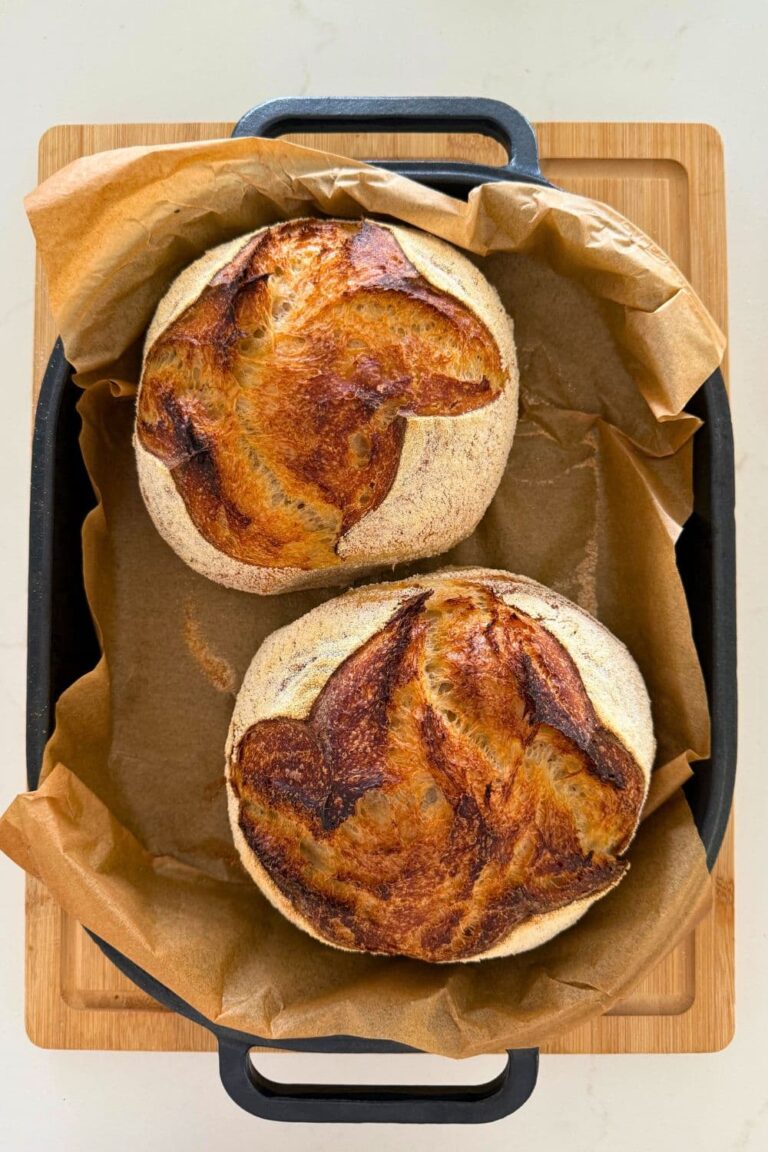

I gave up on the dutch oven after feeding my compost nearly a dozen failed loaves of bread. I also gave up on pure sourdough starter and now add 1/2 tsp yeast to my sandwich loaf bread. I guess that's my rhythm.
Fantastic blog! Everything a newbie needs to bake, improve, stretch their baking confidence and enjoy the sourdough challenge.
Like learning the art of pie crust making, it’s trial and error and developing the ‘feel’ . All very important on this culinary experience.
Thanks so much.
Hi,
Love your site! I started using a little regular yeast in my sourdough sandwich bread and love the "hybrid" result. That said, if it reduces the ability of the sourdough to "eat" the gluten, I am not sure I want to use it. What's your opinion on it?
Lee (she/her), Halifax, Canada
So glad you love the site! Yes using regular yeast in your sandwich bread will not give you the same fermentation benefits of using sourdough starter alone. That said, just a pinch will not be as much of a reduction as say 7g of yeast 🙂
Brilliant! Thanks so much for this and all the other really helpful info and advice on PantryMama.
I wonder, did I miss the explanation of ratios?
What is the ratio of flour, water, and salt?
I did receive a starter from a good friend. I did make one loaf in the dutch oven, and it turned out really well with the exception of the flavor, which was not too much like sourdough. I will be making another loaf before this weekend and hope to get a better flavor with my next loaf.
You can find a full explanation of sourdough stater ratios here.